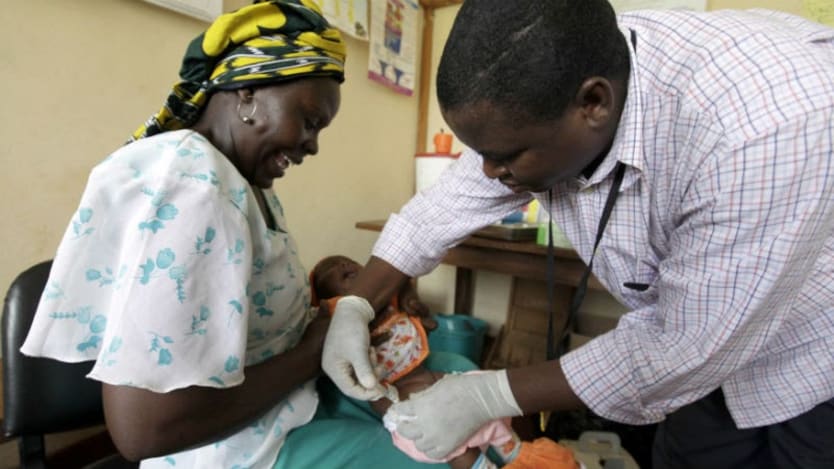
The arrival of 2020 kicked off what the United Nations is calling a “decade of action” around a host of efforts to reach the ambitious Sustainable Development Goals that world leaders have promised to achieve by 2030.
For those of us focused on reducing the incredible disparities in health that exist in the world today, we will be urging far more investment and political capital to reach key SDG milestones, which include promises to end the AIDS, malaria, and tuberculosis epidemics and dramatically reduce maternal and childhood deaths.
For many advocates trying to build political momentum for the SDGs, there will be a temptation to argue that the road to 2030 is straightforward — that we have the tools we need to achieve our health-related goals, we simply must ensure everyone, everywhere has access to them. But the reality is, we don’t. Moreover, claiming we do can have the unintended effect of limiting support for the full array of actions and investments urgently needed.
To reach the SDGs, we must do two things at once: Reach everyone with the solutions we have, while increasing research investments to find the solutions we don’t.
The fight against HIV/AIDS and malaria offer instructive examples.
Today, thanks to the fruits of past research, it is tempting to think that the table is set to vanquish HIV/AIDS once and for all. There are drugs that can be very effective at controlling infections. And more recently, these antiretrovirals have become available as a low-dose daily pill known as PrEP — short for pre-exposure prophylaxis — that can prevent infections from ever happening.
But availability of PrEP is not the only significant challenge to its widespread adoption.
There is evidence from clinical trials with PrEP among young women in sub-Saharan Africa — who account for a 25 % of new HIV infections globally — indicating that even when they have access, concerns about stigma and side effects limit the daily adherence required for PrEP to be effective. That means new innovations are still very much needed to defeat HIV/AIDS. For example, there are new efforts to develop long-lasting forms of PrEP that could address barriers to using a daily pill. We also need to continue investments that are spurring progress toward an AIDS vaccine.
Malaria offers another instructive example of the importance of maintaining a strong focus on innovation.
A couple of decades of steady and dramatic declines in malaria infections and deaths prompted optimism that tools such as insecticide-treated bed nets, indoor residual spraying, and drugs known as artemisinin-based combination therapies were sufficient to conquer the disease. But then came a rise of insecticide-resistant mosquitoes and drug-resistant infections, and a subsequent halt in progress.
Luckily, steady investments in malaria research and development are producing innovations that can reinvigorate the fight. These include an experimental drug targeting the deadliest form of the disease that is showing early potential to cure patients with a single dose. Also, a new malaria vaccine is now being piloted in several African countries, and several more are in late-stage clinical development.
And there is a new class of insecticides — developed by scientists in Israel, now being tested in sub-Saharan Africa — that employs plant-derived sugars that are lethal to malaria-carrying mosquitoes, but safe for humans.
It’s also important to recognize that interventions that are very effective in wealthy countries may have little impact in poor countries, even if they become available. There is a drug called oxytocin — not to be confused with the painkiller OxyContin — that is very effective at stopping postpartum hemorrhage, the leading cause of maternal deaths in the developing world. But it requires refrigeration and intravenous infusion, significantly limiting its value for many poor countries.
With funding from the U.S. Agency for International Development’s Saving Lives at Birth initiative, scientists at Australia’s Monash University have developed a new oxytocin inhaler designed to treat postpartum hemorrhage even in the absence of electricity, refrigeration or trained health care workers.
The point is that while expanding access to existing interventions is essential to health equity, it’s also important that global health advocates give equal attention to the need for greater investments in R&D. Among other things, biology is always a wild card throwing up new challenges, like the novel coronavirus and, less noticed, a disturbing rise in drug-resistant HIV and tuberculosis. The rapid response to these threats — from the work underway to develop a coronavirus vaccine to the recent arrival of a new TB drug and new approaches to HIV treatments — are a credit to a steady commitment to R&D that has produced an amazing array of new technologies.
The fact is that today, we don’t yet have the tools we need to achieve the health-related ambitions enshrined in the SDGs. But they are clearly within reach — if we continue to invest in R&D while working to ensure breakthroughs emerging from what many consider to be a golden age for biomedical innovation are available to all.








